About the museum
Welcome to the Municipal Museum of Natural History and Territory of Città della Pieve (PG) Palazzo della Corgna - Piano Nobile - Free entry
The Museum of Natural History and Territory of Città della Pieve, inaugurated in 2009 at Palazzo della Corgna, exhibits part of the materials contained in two private collections, of Antonio Verri and Paolo De Simone, a small collection of period scientific instruments used in Physics Cabinet of the Certified Technical Schools, two herbaria and donations added in recent years.
After numerous and troubled transfers, starting from 1994, the materials were the subject of the first reconnaissance and cataloging operations, thanks to the contribution of the naturalists of the IGEA cooperative, the Young Ecologists group “Il Riccio” and the intervention of the CAMS (Centro University for Scientific Museums) of the University of Perugia.
The Museum is located in the sixteenth-century Palazzo della Corgna, in Piazza Gramsci n. 1 and occupies four rooms on the Piano Nobile.
In the first decades of the 1900s the “Antonio Verri” (1839 – 1925) and that of Paolo De Simone (1859 – 1906) collections were donated to the Post Elementary School – Ex Vocational Training, located in the building behind the Church of Sant’Agostino ( today Sala Sant’Agostino).
With the school reform and the establishment of the Unified Middle School and the consequent restoration work on the structure, the materials were moved to some rooms of Palazzo Fargna, where the Middle School was also temporarily moved. In this period, the fourth and fifth Gymnasium were present in the same structure (the proposal to establish the Classical High School in Città della Pieve was canceled with the establishment of the current Scientific High School). After a few years, the Municipal Administration felt the need, for reasons of space, to choose Palazzo Fargna as the seat of the city Municipality, therefore the Middle School was brought back to the Sant’Agostino complex and the collections, even richer in materials, they were deposited on the floor of the attic of Palazzo Orca, in via Veneto, where they remained for a few decades in a state of total abandonment.
In the 90s Dr. Luca Convito, member of the Coop. IGEA (Investigation, Management and Environment) and naturalistic guide of the Volunteer Association – Young Ecologists Group “Il Riccio”, today Ecologist Group “Il Riccio”, having taken note of the situation of neglect in which the collections found themselves, in collaboration with the The then president of “Il Riccio”, Carmelita Taborgna, asked the Mayor, Palmiro Giovagnola, to move the materials to a more accessible and controllable, and therefore more suitable, place. The Mayor agreed and everything that was left and could be restored was placed on tables in the well-ventilated and dry rooms of the current Primary School of the “Pietro Vannucci” Comprehensive Institute, involving the young volunteers of “Il Riccio” in the demanding transport.
After repeated requests from the Association and the support of the then Councilor for Culture, Professor Maria Luisa Meo, the material was cataloged thanks to the intervention of the CAMS (Centro Ateneo Scientific Musei) of Perugia and brought to the main floor of the Palace of Corgna.
At this point, the construction of the much desired Science Museum with the name “Museum of Natural and Territory History” of Città della Pieve begins and ends at the current site.
In a solemn manner, in the presence of city and non-city authorities, the inauguration took place in April 2009.
It was thus possible to admire the exhibitions, although reduced, refurbished, but only for a few months, since, due to lack of funds and personnel, the door of the Museum was closed, a tangible sign of its end.
The disappointment of those who had wanted its realization was notable.
Luckily the closure was only temporary.
The active interest of Councilor Meo, the active collaboration with the “Il Riccio” Association and in particular the commitment of its volunteers, meant that in August 2011, it was reopened to the public, with the patronage of the Municipality.
In the meantime, some young people from Pieve, including several members of the “Riccio”, gave life to ASAV, the Antonio Verri Scientific Association, which over the years has organized cultural events.
Shortly afterwards “Il Riccio” donated his herbaria to the Museum, the result of constant and long work, and a first part of terracotta mushrooms made by Mario Morellini.
Subsequently, the Free University of Città della Pieve put on display, in the last room, the model of Ponticelli’s brick kiln, an interesting cross-section of local life, expertly created by Antonio Mugnari.
At the same time, Dr. Daniela Amoretti, Prof. Silvia De Fabrizio, the young Lucio Costantini and Irina Piva worked to prepare illustrative material in Italian, English and German.
Between 2015 and 2016 the Museum was enriched with two other interesting collections donated by the heirs of Alvaro Marchesini and those of the Vivani-Faraoni spouses; of a marten, gift from the prof. Alfredo Costa, in 2016 and 2018 “Il Riccio” completed the collection of mushrooms, again the work of Mario Morellini. In 2023 the gemologist Carlo dell’Oro donated a collection of precious and semi-precious stones and fossils of interest in goldsmithing.
In 2023, the “Francesco Travaglini” scientific library was inaugurated inside the Museum.
Since 2023 the Museum has been registered with the National Association of Italian Science Museums.
Today, over twenty volunteers from “Il Riccio” make the Museum accessible to visitors. The “Il Riccio” Ecologist Group welcomes new donations, takes care of existing material, organizes exhibitions, conferences and educational workshops with schools.
Can we do more and better? Definitely yes! With the collaboration and commitment of everyone.
